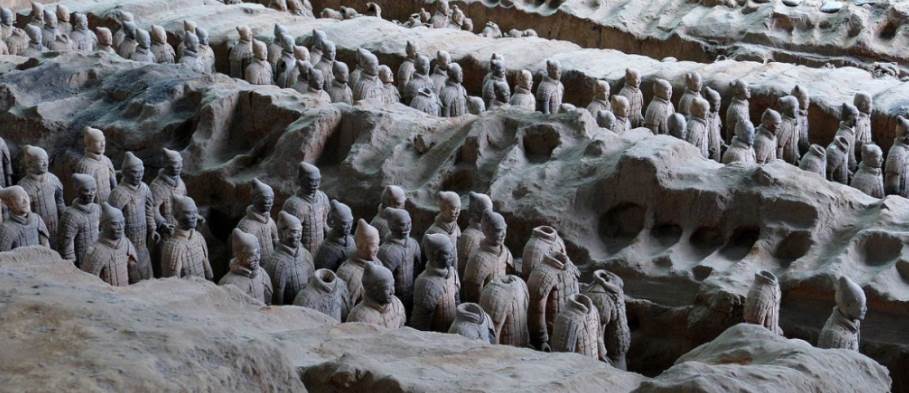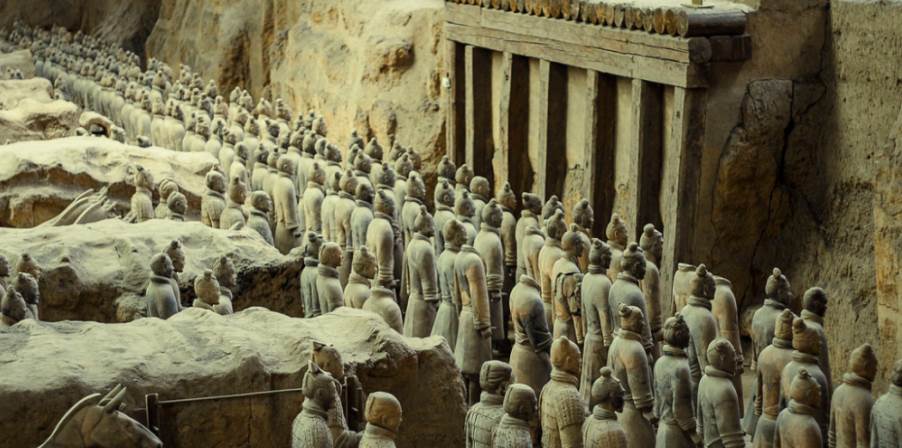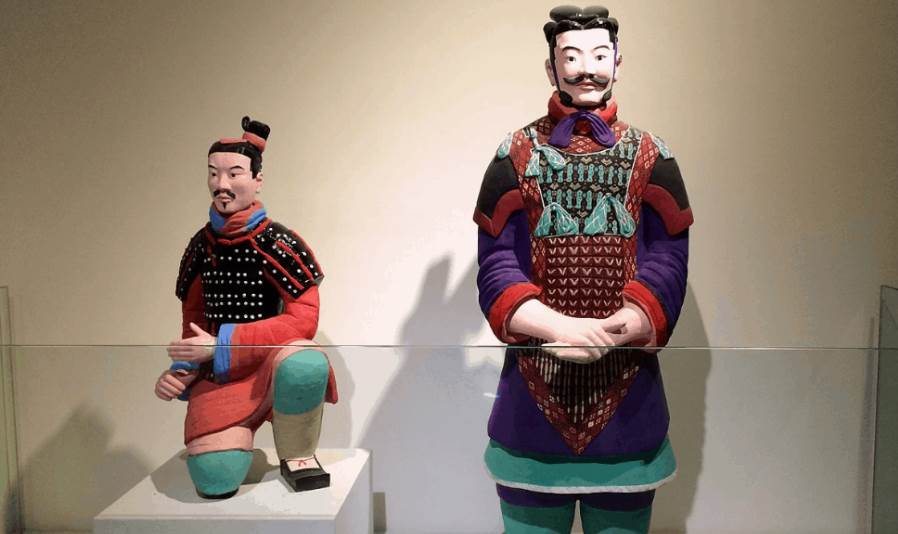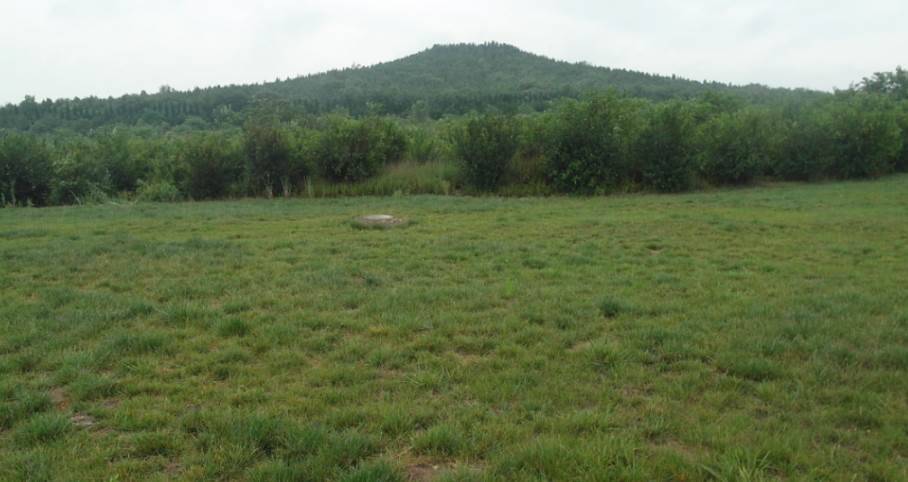In this list of facts about the Terracotta Army, you’ll find out all the details about this huge army of ancient figures.
The Terracotta Army also referred to as the Terracotta Warriors, is some sort of funerary art that was meant to protect the emperor of China in the afterlife.
Strangely enough, the huge amount of statues have only been discovered in the year 1974 by two farmers who were digging for water,
The Terracotta Army dates back to the late 3rd century B.C. and there have been stories about its existence, but were never found until 1974.
The Terracotta Army doesn’t relate to real warrior groups and has more similarities to the artifacts found in, for instance, the Egyptian pyramids. These were also meant to support the deceased ruler (the Pharaoh) in the afterlife.
Let’s take a closer look at all the facts about the Terracotta Army so you can get a clear picture of what they are all about.
1. Created over 2,200 years ago
The creation of the collection of the Terracotta Army began in 246 B.C in Lintong County, just outside Xi’an, Shaanxi, China.
The construction began when future emperor Qin Shi Huang was just 13 years old and became the King of Qin.
Qin was the founder of the Qin dynasty and the first emperor of a unified China. The significance of his rule is emphasized by the huge endeavor of creating the Terracotta Army.

2. The Terracotta Army is huge
They didn’t take the construction of the Terracotta Warriors lightly, that’s for sure. There were a total of 3 pits in which a huge amount of statues were found.
The entire collection of pit 1 consists of:
- 8,000 soldiers
- 130 chariots with 520 horses
- 150 cavalry horses
In the other pits, other types of statues were found as well such as officials, acrobats, strongmen, and musicians.
They wanted to ensure Emperor Qin didn’t lack anything in the afterlife.

3. A huge Terracotta Army takes time to build
If you see the enormity of the whole project, you understand that it would have taken a lot of time to build in those days.
It’s estimated that about 700,000 (!) workers worked daily to construct the site for nearly 40 years.
Unfortunately, Emperor Qin wasn’t alive anymore to witness the finalization as he died 4 years earlier.

4. The eighth wonder of the ancient world
While it hasn’t received this title officially just yet, I’m positive that most have to agree that this enormous found is right up there.
It was former French president Jacques Chirac who brought up the mention of making the Terracotta Army the eighth wonder of the ancient world when he visited the site back in 1987.
Title or not, the main conclusion is that the Terracotta Army is one of the biggest archeological finds in recent history.
5. The necropolis
The Terracotta Army is part of a huge necropolis, which means a large cemetery complex with tombs and monuments. In other words, a huge city of the dead.
This necropolis is still being excavated today, even though a large number of artifacts have been uncovered.
It’s estimated that the total necropolis covers an area of nearly 56 square kilometers, meaning a very large area still has to be explored, and finding new artifacts is a certainty.
At the moment, 4 main pits have been excavated:
- Pit 1: Contains the main Terracotta Army with nearly 6,000 statues
- Pit 2: Contains military figures including cavalry and infantry and is thought to function as the military guard
- Pit 3: Contains a command post with high ranking officers
- Pit 4: Empty, uncertain why.
Other pits that formed the entire necropolis have also been excavated and contain bronze carriages, terracotta figures of entertainers such as acrobats and strongmen, officials, stone armor suits, burial sites of horses, rare animals, and laborers, as well as bronze cranes and ducks set in an underground park (source).

6. No two Terracotta Warriors are alike
The Terracotta Army represents real warriors, as they are life-sized. They do however differ in size based on the rank of the figure.
Some scholars discovered though that there are clear similarities in faces, and found about 10 clear patterns
The Terracotta Warriors do vary in height, the costume they wear, and their hairstyle based on their rank.

7. Faded Colors
Originally, the figures were painted in multiple colors using raw materials from the area.
Because they have been enclosed for such a long period of time, the contact with the dry air in the region instantly makes the colors on the statues fade.
In fact, if new statues are uncovered, the colors would fade in as little as 4 minutes the moment the mud surrounding the figure is removed.
Below you can see an example of how the statues looked more than 2,000 years ago in full color.

8. Assembly line production
Because of the huge amount of figures that have been created, there needed to be some sort of order in the process.
A lot has been learned over the past decades as to how the Terracotta Army was created. Here are some of the key elements:
- The Terracotta Army was created by local craftsmen and government-paid workers using local materials.
- Most parts of the body were created separately and then put together.
- They had at least 10 face molds, and clay was used to create the personalized version of each of the figures.
Because different parts were created in different workshops and put together, later on, it resembles assembly line manufacturing as we know it today.
A small detail is that this happened over 2,200 years ago, pretty astounding!

9. Huge number of weaponry
To make the Terracotta Army a real army, the soldiers need to have weapons. Without it, it simply wouldn’t look realistic.
Because a lot of weapons have been looted from the scene shortly after the emperor died, many items have been lost.
Still, over 40,000 pieces of bronze weaponry have been collected so far. These include:
- Swords
- Daggers
- Spears
- Lances
- Battle-axes
- Scimitars
- Shields
- Crossbows
- Crossbow triggers
The swords that were found during the excavation contain an alloy of copper, tin, and other elements including nickel, magnesium, and cobalt.
It’s fair to say that the Emperor was well protected with not just an army but a huge arsenal of weapons when he took the journey to the afterlife.
10. Qin was a cruel Emperor
Apart from uniting China and becoming the first emperor of said united China, Qin was also known for his cruelty.
He had very little regard for the people that worked for his necropolis and the immense Terracotta Army that was supposed to protect him in the afterlife.
He was also known to order the killings of everybody that opposed his ideas. So while he left a huge treasure, it’s not needed to glorify the man that brought it to us.
11. There’s still a lot of work to do
An interesting fact about the Terracotta Army is that the pit containing the tomb of Emperor Qin still hasn’t been excavated yet.
Wonder what they will find there? We sure do!
The question is though, will they even attempt to excavate it in the first place?
Results from testing came back highly positive for mercury. Scientists discovered in accounts talking about the tomb that mercury was used to reflect the local rivers running through Qin’s tomb.
It’s still being debated whether or not safety can be guaranteed for the people working on the excavation and whether or not the contents of the tomb can be safeguarded from damage.
Fun fact: Only 1% of the total area has been excavated so far!

12. The Terracotta Army is big business
Since the discovery and ongoing excavation, the entire complex has turned into an immense museum.
Everybody wants to get a glimpse of the 2,200-year-old Terracotta Warriors who are protecting emperor Qin in his afterlife.
It’s estimated that over 5 million people visit the museum every year, and during the holiday weekend alone, over 400,000 people visit the museum.
We can only imagine how immense the museum will become if they manage to excavate the remaining 99% of the huge necropolis.
13. The traveling Terracotta Army
If you think all the Terracotta Warriors have found their eternal resting place in the Xi’an area, then you’re mistaken.
Many figures have been moved to be on display in multiple places around the world. The first time they were put on display outside of China was in 1982 during an exhibition at the National Gallery of Victoria in Melbourne, Australia.
Since then they have been displayed all over the world, from Europe to North- and South America to India.
It’s truly a mobile Terracotta Army, and sometimes over 100 figures are put on display in exhibitions around the world.



